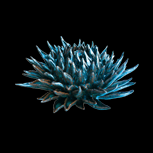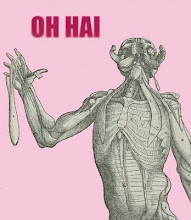Cute Enamel Pins For Every Medical Speciality
-
Cute Gastroenterology Pin Collection
We can smell an gastroenterology pin order a mile away when we're shipping
out pin orders -- for those of you who gr...
Saturday, April 28, 2012
Tuesday, April 24, 2012
Wednesday, April 18, 2012
Tuesday, April 17, 2012
WCW on whales
An excerpt from Some Simple Measures in the American Idiom and the Variable Foot:

II: HISTOLOGY
There is
the
microscopic
anatomy
of
the whale
this is
reassuring

Whale, American Museum of Natural History, New York
Brueghel, Bowie, and William Carlos Williams

www.youtube.com

See the poem here:
The clips are from the film The man who fell to Earth. The song is from The man who fell to Earth musical

David Bowie wrote this for the movie The Man Who Fell to Earth. In it, he opens a book of poetry with Brueghel's Fall of Icarus illustrated. I would like to think it's a version of WCW's poems:
See the poem here:
http://wcwbrueghelpoetry.blogspot.com/2007/05/landscape-with-fall-of-icarus.html
Sunday, April 15, 2012
Family Treasures
Saturday, April 14, 2012
Real Live Academic Quote of the Day 4/15/12
"The two great ages of geographical discovery through the voyages of the early 1500s and through Alexander's conquests correspond to two great ages of anatomical discovery. These are also the two most inventive ages of erotic art in the West, for happy discoveries inspire a hopeful curiosity about everything."
Mayor, Artists and Anatomists, 1984
Wednesday, April 11, 2012
Bodies in the Blogosphere
I've seen most of this stuff before, but nice to have it in one place (even if not attributed):
http://marinni.livejournal.com/258692.html?thread=1060740
http://marinni.livejournal.com/258692.html?thread=1060740
Tuesday, April 10, 2012
Witches Embraced in Art History

Hans Baldung Grien, New Year’s Wish with Three Witches, 1514
I first saw this image [in print] in Koerner's The Moment of Self-Portraiture of German Renaissance Art (1993). There, he used it as part of a larger argument that the self was ingrained in art, and that the viewer became the subject in that he/she had to contend with their own thoughts on the artwork at hand.
Claudia Swan used witchcraft as a way to show the imagination of, mostly, Jacques de Gheyn II in Art, Science, and Witchcraft in Early Modern Holland: Jacques de Gheyn II (1565-1629). (She also has a wonderful academic fascination with both blowfish and scientific representation).
And this filters (anachronistically) into Lyndal Roper's Oedipus and the Devil, which uses testimony of women accused of witchcraft to show, through their imaginative stories, how gender is constructed and reconstructed in a social context.
Monday, April 9, 2012
The Photographer

Edweard Muybridge is quite the character. In honor of the 182nd anniversary of his birth, Google put up a Doodle that animates his famous series of pictures proving that racing horses do, in fact, lift all their legs up at once.
This is what he's best known for -- serial photography that is now thought of as essentially the predecessor to film. But it's weird that he's still famous for his photography even though he killed another man in cold blood.
Such a story inspired Philip Glass to produce an opera called The Photographer (1982).
But what always interested me (obviously) are his body studies. He made people strip nude and move in certain ways so that he could record how the body looked in motion.

Muybridge, Woman Walking Down Stairs, 1887.
And Muybridge was also [according to some] the inspiration for one of the coolest paintings ever, Marcel Duchamp's Nude Descending Staircase, N0. 2, 1912.

Marcel Duchamp, Nude Descending Staircase, No. 2, 1912. Philadelphia Museum of Art.
Thursday, April 5, 2012
Spring is like that, I guess
Some samples of my favorite poems:
"Christmas lights left up all year
thus robbed of the emotive force
of their redeployment I do not like."
-Dean Young, Don't Need a New One, Just Fix What You Got
thus robbed of the emotive force
of their redeployment I do not like."
-Dean Young, Don't Need a New One, Just Fix What You Got
"April
Comes like an idiot, babbling and strewing flowers."
-Edna St Vincent Millay, Spring
Comes like an idiot, babbling and strewing flowers."
-Edna St Vincent Millay, Spring
Wednesday, April 4, 2012
Tuesday, April 3, 2012
The Shitter, Exposed
"One of the pleasures of the show is being able to enjoy the details of the paintings, particularly the small figures in the background. This has been a game for centuries: in 1604 the Dutch art historian Karel van Mander recorded that Patinir was known as 'The Shitter', since his trademark was said to be the tiny figure of a defecating man, hidden in the composition. However, the exhibition suggests that this incongruous Bosch-like man appears in only three works (all once owned by Philip II)."
From Here
Also, I might add, impossibly hard to find on the interwebs.
Ephemeralia
What we know of the Renaissance are paintings and sculptures made of permanent materials--bronze and marble, mostly. But there were so many others lost to us today.
Most famously, and written of in Marina Belozerskaya's Medici Giraffe (among other places) was a snowman created from the ever-innovative hands of Michelangelo. And beyond this, there were sculptures made of ice and sugar to entertain the highest of courtly patrons.
A Short Lesson on Anatomy Lessons
Often in Dutch art, folks will see paintings titled "The Anatomy Lesson of..." Generally, these are made as portraits--and even more often guild portraits--of anatomy guilds that, like other guilds of the time, display them in their halls to celebrate their illustrious members.





One of the most famous is Rembrandt's Anatomy Lesson of Dr. Tulp:

Rembrandt van Rijn, The Anatomy Lesson of Dr. Nicholaes Tulp, 1632, Mauritshuis, The Hague
I saw this one in person and it was extremely awkard to behold, seeing as though the foreshortening and general proportions (due to faulty perspective) were off. But my hypothesis is that this is because it would have normally (in a guild hall) been displayed higher up on the wall than it was at the Mauritshuis.
What Dr. Tulp is doing is not far from what people tend to do when they get fresh crab at the beach--he is pulling on a tendon to made the hand move, just like you can with crab claws. *pinch, pinch*
Another popular one is the AL of Dr. Ruysch, a guy best known for preserving specimens of human anatomy and creating bizarre tableaux of them, including these jolly fetuses.
Jan van Neck, The Anatomy Lesson of Dr. Frederick Ruysch, 1683, Amsterdams Historisch Museum
My latter comment might explain why his son looks scared shitless. 

And, you know, all the other creepy things going on in the picture.
But my personal favorite is less known:

Michiel van Mierevelt, The Anatomy Lesson of Willem van der Meer, 1617, Stedelijk Museum Het Prinsenhof, Delft
It's my favorite because of its amazing detail. Firstly, all of the beholders are carrying little sprigs of herbs and incense to stave off the smell of the body. And the innards themselves are gleaming in an otherwordly, almost fishy manner. Well, maybe I'll just show you some of my pictures:



As Much Cooking Fun as a Bucket Full of Unicorn

Above is a hilarious and somewhat disturbing image showing the remains of a unicorn butchered for some good eatin'. Newly rediscovered at the British Library, the supposedly medieval cookbook also has instructions for feasting on non-magical animals.
Seneca's Natural Questions Questioned
"Scholars have debated whether the ethical lessons derived from science are the main motivation of the Natural Questions. The debate starts from the fact that, though the work is on meteorology, the majority of books contain prefaces, conclusions, or digressions on topics that ostensibly have nothing to do with meteorology. Some of these, as just mentioned, tackle human fear of unfamiliar phenomena (6.32; 2.59). Some tackle then fashionable forms of luxurious and decadent living that abuse the gifts provided by nature: the craze for cooling drinks with snow (4b.13); the use of winds for sea-travel not to increase knowledge but to wage war (5.18); the use of mirrors by a man whose sexual antics were notorious (1.16); and the contemporary insistence on watching fish die at the dinner table before eating them (3.18)."
from Lucius Annaeus Seneca, Natural Questions, trans. Harry M. Hine (Chicago UP, 2010): 12.
from Lucius Annaeus Seneca, Natural Questions, trans. Harry M. Hine (Chicago UP, 2010): 12.
Monday, April 2, 2012
"Do we really need to embalm everything?"
One of the most entertaining calls for papers I've seen in a long time:
Activating Stilled Lives: The Aesthetics and Politics of Specimens on Display
Sunday, April 1, 2012
Subscribe to:
Posts (Atom)













